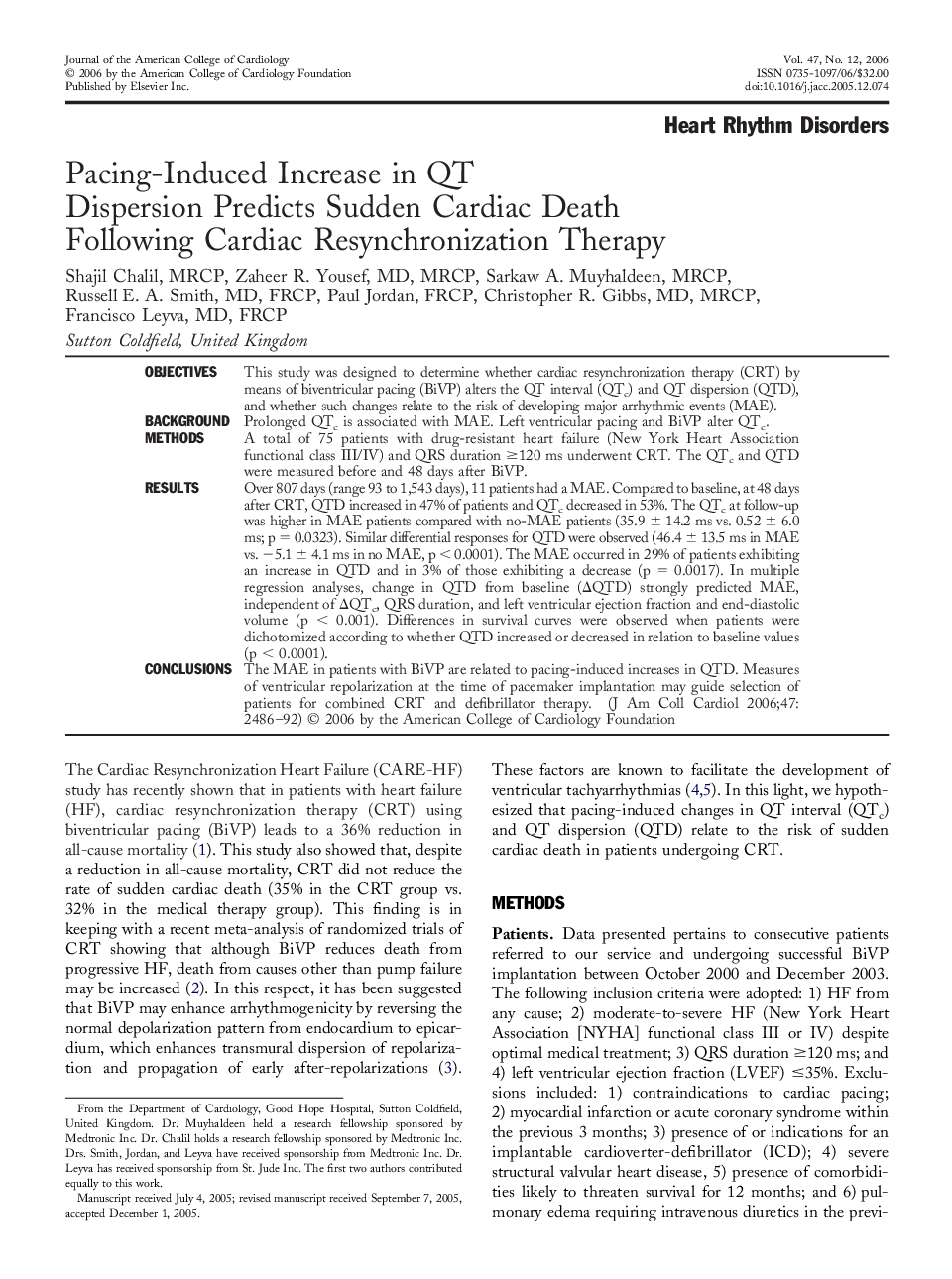| Article ID | Journal | Published Year | Pages | File Type |
|---|---|---|---|---|
| 2954075 | Journal of the American College of Cardiology | 2006 | 7 Pages |
ObjectivesThis study was designed to determine whether cardiac resynchronization therapy (CRT) by means of biventricular pacing (BiVP) alters the QT interval (QTc) and QT dispersion (QTD), and whether such changes relate to the risk of developing major arrhythmic events (MAE).BackgroundProlonged QTcis associated with MAE. Left ventricular pacing and BiVP alter QTc.MethodsA total of 75 patients with drug-resistant heart failure (New York Heart Association functional class III/IV) and QRS duration ≥120 ms underwent CRT. The QTcand QTD were measured before and 48 days after BiVP.ResultsOver 807 days (range 93 to 1,543 days), 11 patients had a MAE. Compared to baseline, at 48 days after CRT, QTD increased in 47% of patients and QTcdecreased in 53%. The QTcat follow-up was higher in MAE patients compared with no-MAE patients (35.9 ± 14.2 ms vs. 0.52 ± 6.0 ms; p = 0.0323). Similar differential responses for QTD were observed (46.4 ± 13.5 ms in MAE vs. −5.1 ± 4.1 ms in no MAE, p < 0.0001). The MAE occurred in 29% of patients exhibiting an increase in QTD and in 3% of those exhibiting a decrease (p = 0.0017). In multiple regression analyses, change in QTD from baseline (ΔQTD) strongly predicted MAE, independent of ΔQTc, QRS duration, and left ventricular ejection fraction and end-diastolic volume (p < 0.001). Differences in survival curves were observed when patients were dichotomized according to whether QTD increased or decreased in relation to baseline values (p < 0.0001).ConclusionsThe MAE in patients with BiVP are related to pacing-induced increases in QTD. Measures of ventricular repolarization at the time of pacemaker implantation may guide selection of patients for combined CRT and defibrillator therapy.
